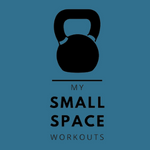Are you tired of struggling to find the perfect ab workout that doesn’t leave you clutching your stomach in discomfort? As a gastritis and hiatal hernia sufferer myself, I’ve been in your shoes and understand your frustrations. After being diagnosed a few years ago, I decided to find a solution. Finally, I’ve cracked the code and discovered the ultimate 3-move ab workout that will strengthen your core without triggering those dreaded gastritis symptoms. Say goodbye to burping, burning sensations, and stomach pain during your core workouts, because I’ve tailored a solution just for us. The best part? No need for expensive gym memberships or bulky equipment! All you need is a little determination, motivation, and the willingness to try these accessible and effective exercises. So, let’s get started on your journey to a stronger core without the pain!
===> RELATED: Lifting weights with gastritis
Affiliate Disclosure
As an Amazon Associate, I earn from qualifying purchases made through the affiliate links on this website. I only recommend products that I personally love and believe will add value to you as you pursue your fitness goals. By using these links to make a purchase, you’ll be supporting my efforts to bring you quality content, and it won’t cost you anything extra. Thank you for your support!
Understanding Gastritis: How Your Ab Workouts Can Be Impacted
Gastritis, and the unrelenting pain and discomfort it causes, has affected many of us, including myself. It can come in acute or chronic forms, with symptoms ranging from mild discomfort to severe pain.
You’re probably all too familiar with stomach pain, nausea, indigestion, bloating, loss of appetite, and heartburn. The causes can be varied, from stress and alcohol consumption to medications like non-steroidal anti-inflammatory drugs (NSAIDs) and bacterial infections like Helicobacter pylori.
Now, let me share my own experience.
When I was first diagnosed with gastritis, I had to completely give up my ab workouts. The pain and discomfort were unbearable.
I mean, who wants to do crunches, leg raises, or planks when they cause even more stomach pain and irritation? Those exercises put so much pressure on my stomach that they just weren’t worth it.
But I didn’t want to abandon ab workouts altogether.
I knew I needed to find exercises that would work for me, targeting my core muscles without causing a flare-up of my gastritis symptoms. That meant looking for low-impact, controlled movements that didn’t involve excessive bending, twisting, or direct pressure on my stomach area.
And guess what? I found them!
In the following sections, I’ll introduce you to three amazing ab exercises that won’t aggravate your gastritis.
I’ve personally tried and tested these exercises, and they’ve made a huge difference in my life. By incorporating these moves into your own fitness routine, you too can strengthen your core and sculpt your abs without making your gastritis worse
Exercise 1: The Deadbug – Mastering the Technique for Gastritis-Friendly Results
The Deadbug is an excellent ab exercise that strengthens your core while minimizing the strain on your stomach. It’s been a game-changer for me since my gastritis diagnosis, and I believe it will be for you, too.
Here’s how to perform the Deadbug correctly, so you can enjoy all its benefits without aggravating your gastritis symptoms:
- Lie on your back on a comfortable surface, such as a yoga mat or padded floor.
- Bring your arms up, so they’re pointing toward the ceiling, and bend your knees at a 90-degree angle, creating a tabletop position with your legs.
- Engage your core by gently pressing your lower back into the ground, ensuring there’s no arch or gap.
- Slowly lower your right arm and left leg simultaneously, extending them fully while keeping your lower back pressed against the ground. Avoid lowering your arm and leg too close to the ground, as this can put undue strain on your stomach.
- Return your arm and leg to the starting position and repeat the movement with your left arm and right leg.
- Perform 3 sets of 10-12 repetitions, alternating sides.
The key to making the Deadbug a gastritis-friendly exercise is maintaining proper form and control throughout the movement.
It’s essential to keep your core engaged and your lower back pressed to the ground to prevent any unwanted stress on your stomach.
By consistently practicing the Deadbug, you’ll be well on your way to building a stronger core that can support your daily activities without the discomfort and pain often associated with gastritis.
Plus, as you become more comfortable with the exercise, you can increase the challenge by performing more repetitions, slowing down the movement or adding ankle / wrist weights for added resistance.
Exercise 2: On-the-Spot Weighted Offset March – Strengthening Your Core One Step at a Time
The On-the-Spot Weighted Offset March is another fantastic exercise that has helped me continue working on my abs without causing any flare-ups of my gastritis symptoms.
This standing exercise targets your core muscles while maintaining an upright position, reducing the strain on your stomach. Here’s how to execute this exercise safely and effectively:
- Stand up straight with your feet hip-width apart, holding a heavy weight (such as a 20 kg kettlebell) in your right hand. Make sure the weight is heavy enough to require effort to maintain upright posture and balance.
- Engage your core muscles and maintain a neutral spine throughout the exercise.
- Begin marching on the spot, raising your left knee toward your chest while keeping the kettlebell stationary in your right hand.
- Slowly lower your left leg back to the starting position.
- Perform the same movement with your right knee, alternating sides for a total of 10-12 repetitions on each side.
- Complete 3 sets of 10-12 repetitions, ensuring you maintain proper form and control throughout the exercise.
The On-the-Spot Weighted Offset March can be easily modified to suit your fitness level and comfort. You can adjust the weight or increase the number of repetitions as needed. Once again, ankle weights could be added to increase resistance.
The key to making this exercise suitable for gastritis sufferers is to maintain a strong, stable core and an upright posture, avoiding any forward bending that could put additional pressure on your stomach.
Incorporating the On-the-Spot Weighted Offset March into your ab workout routine will help you build functional core strength while minimizing the risk of irritating your gastritis.
With consistent practice, you’ll notice improvements in your overall core stability and endurance, which will undoubtedly benefit your day-to-day life.
Exercise 3: Seated Knee Tucks – A Powerful Move for Gastritis Sufferers
Seated Knee Tucks are the most “ab-direct” exercise of the three, providing that satisfying burn in your abdominal muscles.
This exercise has been a lifesaver for me, allowing me to work on my abs without aggravating my gastritis. Here’s how to perform Seated Knee Tucks effectively and safely for the best results:
- Sit on the edge of a bench or a sturdy chair, gripping the sides with your hands for support. Your legs should be extended straight out in front of you, with your heels resting on the ground.
- Lean slightly back, maintaining a straight back and engaging your core muscles.
- Bend your knees and bring them slowly toward your chest, ensuring that you don’t round your lower back or slump your shoulders.
- Pause briefly with your knees close to your chest, then slowly extend your legs back to the starting position, keeping your heels off the ground.
- Perform 10-12 repetitions for 2-3 sets.
The Seated Knee Tucks exercise is all about maintaining proper form to ensure maximum ab engagement. Engaging your core and avoiding any forward bending or twisting will help minimize the risk of irritating your stomach.
Incorporating Seated Knee Tucks into your gastritis-friendly ab workout routine will help you achieve that abdominal burn you’ve been craving while keeping your symptoms at bay.
With consistent practice, you’ll build a strong, well-defined core that supports your daily activities and improves your overall well-being.
Gastritis-Friendly Ab Workout Routine: Combining the 3 Exercises for Maximum Results
Incorporating these three effective and gastritis-friendly exercises into your workout routine will help you build a stronger, more resilient core while minimizing the risk of aggravating your symptoms. Here’s how you can optimize your workout frequency and timing to make the most of these exercises
Perform each exercise back-to-back with no rest in between. After completing all three exercises, rest for 30-60 seconds before starting the circuit again. Repeat the circuit 3-4 times for a complete ab workout.
- Deadbug: Perform 10-12 repetitions on each side.
- On-the-Spot Weighted Offset March: Perform 10-12 repetitions on each side.
- Seated Knee Tucks: Perform 10-12 repetitions.
Rest for 30-60 seconds, then repeat the circuit two more times (or more, if desired).
Frequency:
Consistency is key to achieving results with any fitness routine. Aim to perform this gastritis-friendly ab workout 3-4 times per week, allowing for adequate rest and recovery between sessions. Over time, you can adjust the frequency based on your comfort level and fitness goals.
Workout Timing Options:
- Warm-Up or Cool-Down: Incorporate these exercises as part of your warm-up or cool-down routine before or after your main workout. Performing them during warm-up helps activate your core muscles, setting you up for better performance and reducing the risk of injury. As a cool-down, they’ll help you maintain your core strength and flexibility while giving your body a gentle, low-impact way to wind down.
- Early Morning “Awakener”: Start your day on the right foot with this quick and energizing ab workout. It’s a great way to wake up your body, boost your metabolism, and set a positive tone for the day ahead. Plus, you’ll have the satisfaction of knowing you’ve already done something good for yourself before the day gets hectic.
- Lunchtime Workout: Squeeze in a quick and efficient ab workout during your lunch break to break up your day, burn off some stress, and give your mind a refreshing reset. It’s a great way to invigorate your body and mind, without needing a long, intense workout session. These exercises can be performed in a small space and require minimal equipment, making them perfect for an office or home setting.
No matter when you choose to perform these gastritis-friendly ab exercises, consistency and proper form are essential for success. By incorporating the Deadbug, On-the-Spot Weighted Offset March, and Seated Knee Tucks into your regular fitness routine, you’ll build a strong core while keeping your gastritis symptoms in check.
🏋️♀️ Lift Heavy, Live Well – The Shirt That Fuels Your Workout!
“If I can push past migraines, pancreatitis, and more to stay fit, so can you. Wear your motivation!”
👇 Click to Buy Your ‘Lift Heavy, Live Well’ Tee NOW! 👇
🔥 Limited Edition! 🔥
This isn’t just a t-shirt; it’s a badge of honor. Perfect for workouts, it’s designed to:
- Keep you inspired 💡
- Make you part of a like-minded community 🤝
- Remind you of your strength and resilience 💪
Limited stock! Click below to join our community of warriors!

Building a Strong Core While Managing Gastritis – You Can Do It Too!
Don’t let gastritis hold you back from achieving your fitness goals.
With these gastritis-friendly ab exercises, you can work on building a strong core and maintaining good health without triggering your symptoms.
Remember to perform these exercises regularly and listen to your body, adjusting the frequency and intensity as needed.
If you enjoyed this article, leave a comment below to let us know how these exercises have helped you or to share any additional tips you have for managing gastritis while working out.
And don’t forget to check out my other articles on lifting weights with gastritis and working out with a hiatal hernia for more tips and inspiration.
With a little patience, dedication, and a willingness to work within your limitations, you can achieve your fitness goals and build a strong, healthy body. Let’s do this together!

